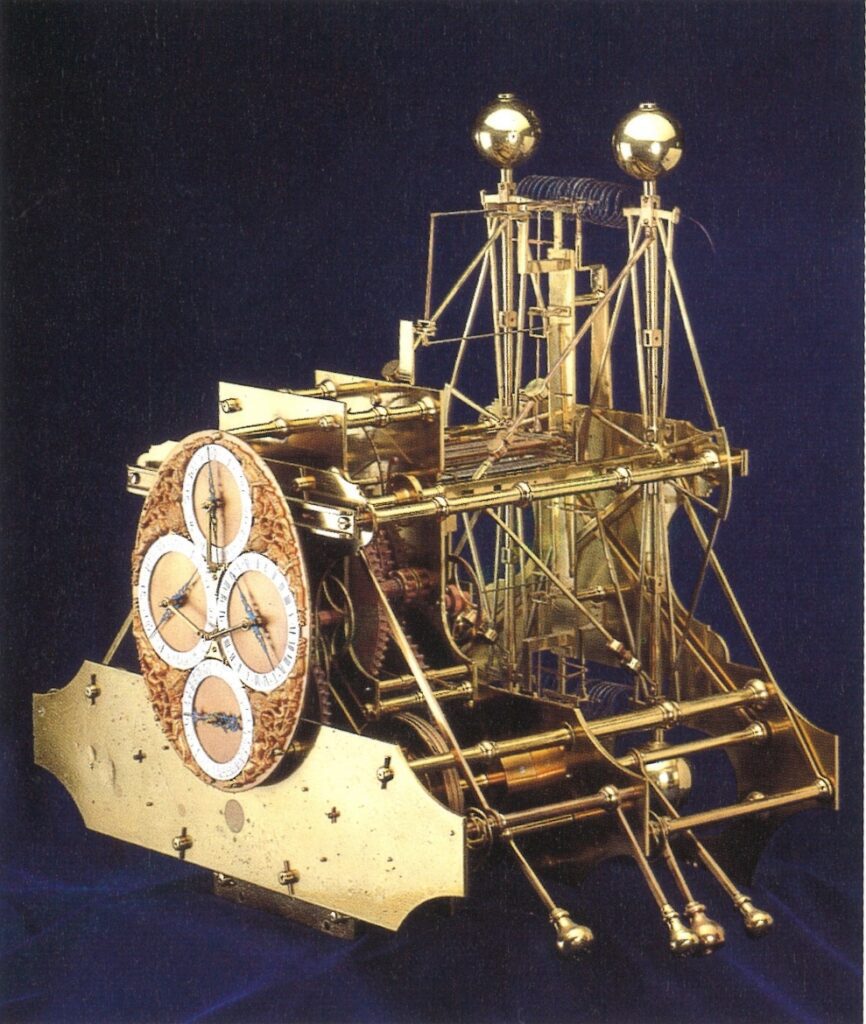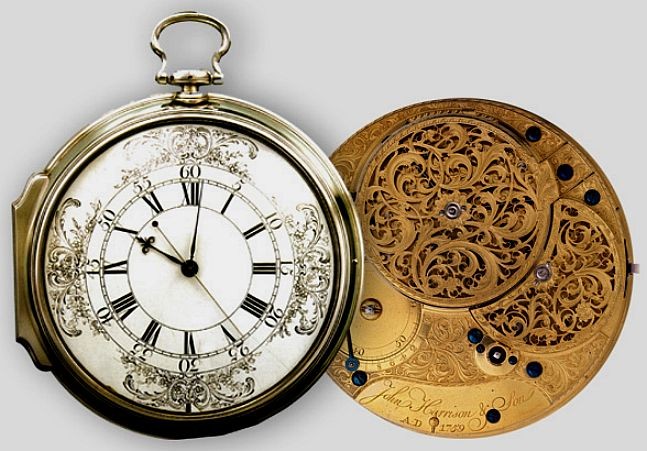Long before satellites could pinpoint exact locations on earth—in tandem with atomic vibrations in the atmosphere (atomic time)—pen, paper, and mechanical engineering were the technologies of accurate timekeeping. For ages, ambient temperatures and varying climates had been baffling explorers, travelers, and horologists alike who were trying to take accurate measurements of distance across swaths of time. That was until the invention of the first functional marine chronometer by John Harrison in the 18th century. A humble Yorkshire carpenter at the time, he blew well established clockmakers out of the water with his chronometer prototype in 1730. But before his invention began making waves, inventing the first marine chronometer was a trans-continental quest which had been ticking for centuries.
The “Longitude Problem”
The “longitude problem” was a name given by the British to the issue of measuring accurate time while mapping at sea. Taking things very seriously, the English passed the Longitude Act of 1714. This Act established a longitude prize through their parliament. Prize money awards were distributed on the basis of 3 main criteria: Chronometer methods had to be able to determine longitude within one degree, determine longitude within 40 minutes, or more accurately determine longitude within 30 minutes. Each one of these specifics would be awarded—in order—a sum of 10,000; 15,000; and 20,000 British pounds. It was a pretty massive incentive where each one of those mentioned specifications paid out up to nearly 2.6million pounds in today’s terms (~3.2million USD). European nations Portugal, Spain, and the Netherlands had also offered monetary awards for solving the problem—all the way back to the late 1500s. However, when England’s government put out their Longitude Act, they gripped Europe’s attention almost immediately (it was likely the instant-millionaire allure). Attempts from original pendulum clock inventor Christiaan Huygens (in the 1670s), as well as other European inventors, proposed many methods up until the Longitude Act was established in England. But it wasn’t until 1730 that a truly revolutionary design would arise to solve the ever-present “longitude problem”.
John Harrison’s H1, H2, H3, and H4 Chronometers

As it were, Jeremy Thacker (British, 1714) began one of the first recorded attempts at building/designing his own machine. Two years later a Frenchman by the name of Henry Sully took on the challenge as well. Plenty of other would-be winners threw their hat in the ring for the longitude prize—but John Harrison proposed his inventive “H1” design in 1730. Garnering a wealth of attention, his 1730 proposal took off swimmingly. Despite making a great impression, though, it wasn’t until 1736 that Harrison’s H1 prototype clock got tested at sea (things moved a lot more slowly back then). His prototype fared so well that he was supplied funds to further improve his invention.
His first H1 (1736) and H2 (1741) Marine Chronometers had used counterbalanced springs instead of gravity to run their timekeeping mechanism—accounting for the motios of maritime vessels. This aspect of his invention still allowed centrifugal force to affect its accuracy to a degree. Harrison thus spent 8 years building and perfecting his H3 Marine Chronometer. This device housed circular balances, a newly invented bi-mechanical strip (to further deal with temperature changes), and another new invention—caged roller bearings. All of these inventions, released by Harrison in 1759, are still used in clockmaking today. Despite these innovations, the circular balances were still not making the grade in terms of precision.

Harrison’s more scaled-down H4 chronometer ditched the large circular balances and bi-mechanical strip for a much smaller fast-beating balance wheel, alongside a temperature-compensated spiral-shaped spring. This final iteration of Harrison’s invention took vogue ideas from timekeeping, was shaped by his inventive mind, and was his most accurate—and final—chronometer. It measured to about the size of a 5 inch pocket watch. A pretty neat feat considering his original H1 was a hefty brass juggernaut of a thing (and wasn’t nearly as precise).
Navigating Onward
The Detent escapement was invented in 1748, which is what ultimately lead to modern mechanical chronometers. That being said, John Harrison’s innovation(s)—combined with those contemporary efforts—opened the door for higher navigational accuracy across all latitudes and longitudes. Furthermore, work on lunar tables was also awarded decent sums by the old Board of Longitude and added a wealth of knowledge to navigational research. John Harrison, throughout 36 years of work (1730-1761), racked up over 23,000 pounds—equivalent to around 3million USD today. His H1, H2, H3, and H4 chronometers summited the peak of horological engineering in his day, and shaped the future of timekeeping immeasurably.
After Harrison’s efforts, the Board of Longitude stayed active until 1828, leaving behind a legacy that lasted for over a century. Harrison’s inventions, inspired by the board’s longitude prize, would remain the gold standard for marine measurement—until electronic movements emerged in the 20th century. Not bad considering the man was self-educated. John Harrision was a true intellect that bled passion into his work, with hardly any means to start. Nowadays he might have reached out through kickstarter. We here at TimesTicking would certainly be donating to the cause.
Times Ticking has been in operation for more than 30 years, since 1982. We have performed watch repair for customers both locally and internationally. If it Ticks! We KNOW it! Our team of watch repair technicians have a combined experience in watchmaking of over 120 years.

